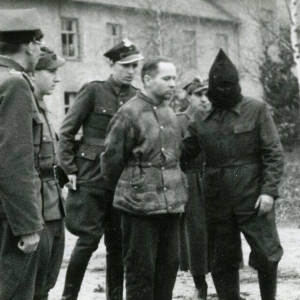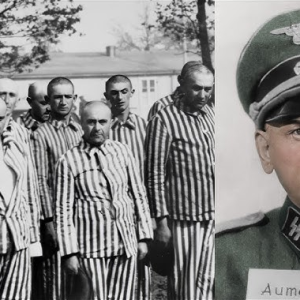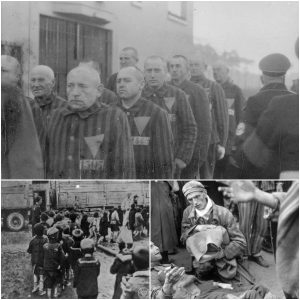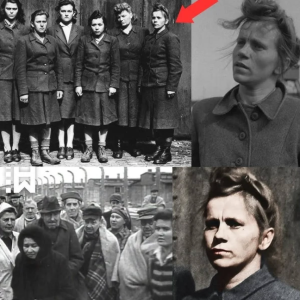In the shadow of the Holocaust’s unimaginable atrocities, the story of Joseph Schleifstein shines as a beacon of resilience and hope. Born on March 7, 1941, in the Jewish ghetto of Sandomierz, Poland, Joseph was just a toddler when the Nazi regime tore his world apart. At the tender age of four, he became one of the youngest prisoners of Buchenwald concentration camp, a place where survival seemed impossible. Yet, through his father’s desperate ingenuity and an unexpected flicker of humanity from his captors, Joseph defied the odds. His story, from a suitcase hiding place to becoming a global symbol of survival, captivates and inspires. Perfect for sharing on platforms like Facebook, this analysis delves into the incredible journey of a young boy who made the Nazis pay for his suffering—not with vengeance, but with the enduring power of his survival.
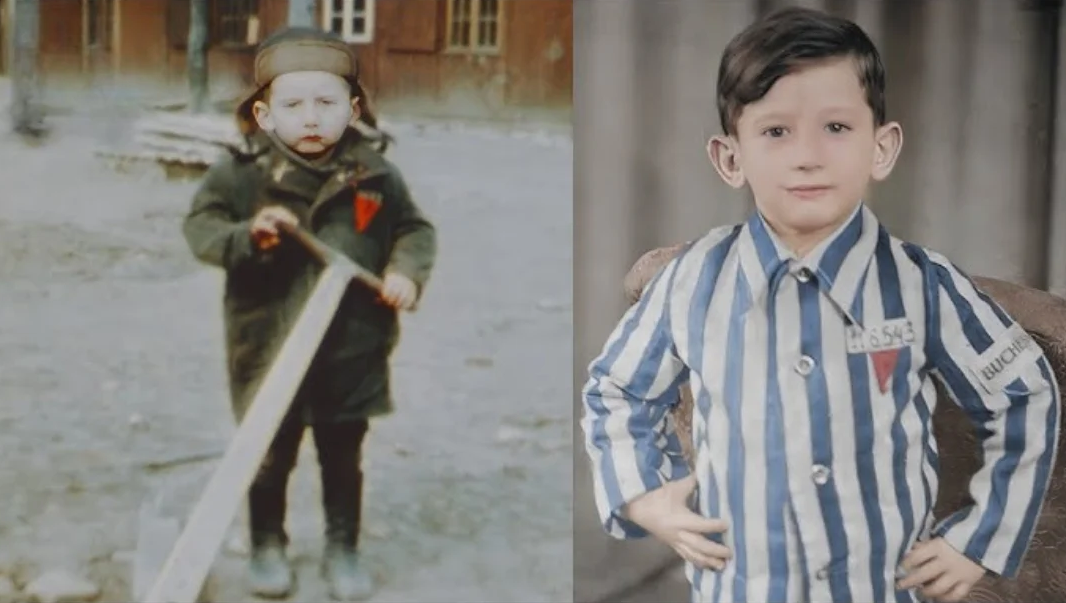
A Childhood Stolen by War
Joseph Schleifstein was born into a Jewish family in the Sandomierz ghetto, in German-occupied Poland, during a time of escalating persecution. His parents, Izrael and Esther, struggled to protect their young son as the Nazis tightened their grip. From June 1942 to January 1943, the family endured life in the Sandomierz ghetto, a cramped and brutal environment where Jews faced starvation, fear, and constant threat of deportation. When the ghetto was liquidated in 1943, the Schleifsteins were forcibly relocated to the Czestochowa ghetto, where Izrael and Esther were likely conscripted into slave labor at one of the HASAG factories. HASAG, a Nazi arms-manufacturing conglomerate, exploited thousands of Jewish prisoners across occupied Europe, turning human lives into tools for war.
Joseph, barely old enough to understand the horrors around him, lived in a world defined by loss and survival. His early years, which should have been filled with play and discovery, were instead marked by the relentless cruelty of the Nazi regime. The move from one ghetto to another was only a prelude to the greater horrors awaiting the family, as the Nazis’ “Final Solution” targeted Jewish children like Joseph with particular ruthlessness.
A Desperate Act of Love at Buchenwald
In 1944, at just four years old, Joseph was deported to Buchenwald concentration camp, one of the most notorious Nazi camps, where tens of thousands perished. For a child so young, survival in such a place seemed unthinkable—children were often among the first to be sent to their deaths. Yet, Joseph’s father, Izrael, refused to let his son’s fate be sealed. In a heart-wrenching act of desperation, Izrael hid Joseph inside a suitcase, smuggling him into the camp to shield him from the Nazis’ immediate selections for extermination.
This act of courage was a fleeting victory. The harsh realities of Buchenwald—starvation, disease, and brutal labor—made it nearly impossible to keep a child hidden. Eventually, Nazi guards discovered Joseph. But in a twist that defies the camp’s legacy of cruelty, some guards chose not to condemn the boy. Instead, they treated him as a kind of “mascot” for the camp, an extraordinary and rare gesture in a place where compassion was all but extinguished. Whether driven by a fleeting sense of humanity or some other inscrutable motive, this decision allowed Joseph to survive in an environment designed to destroy.
A Symbol of Resilience
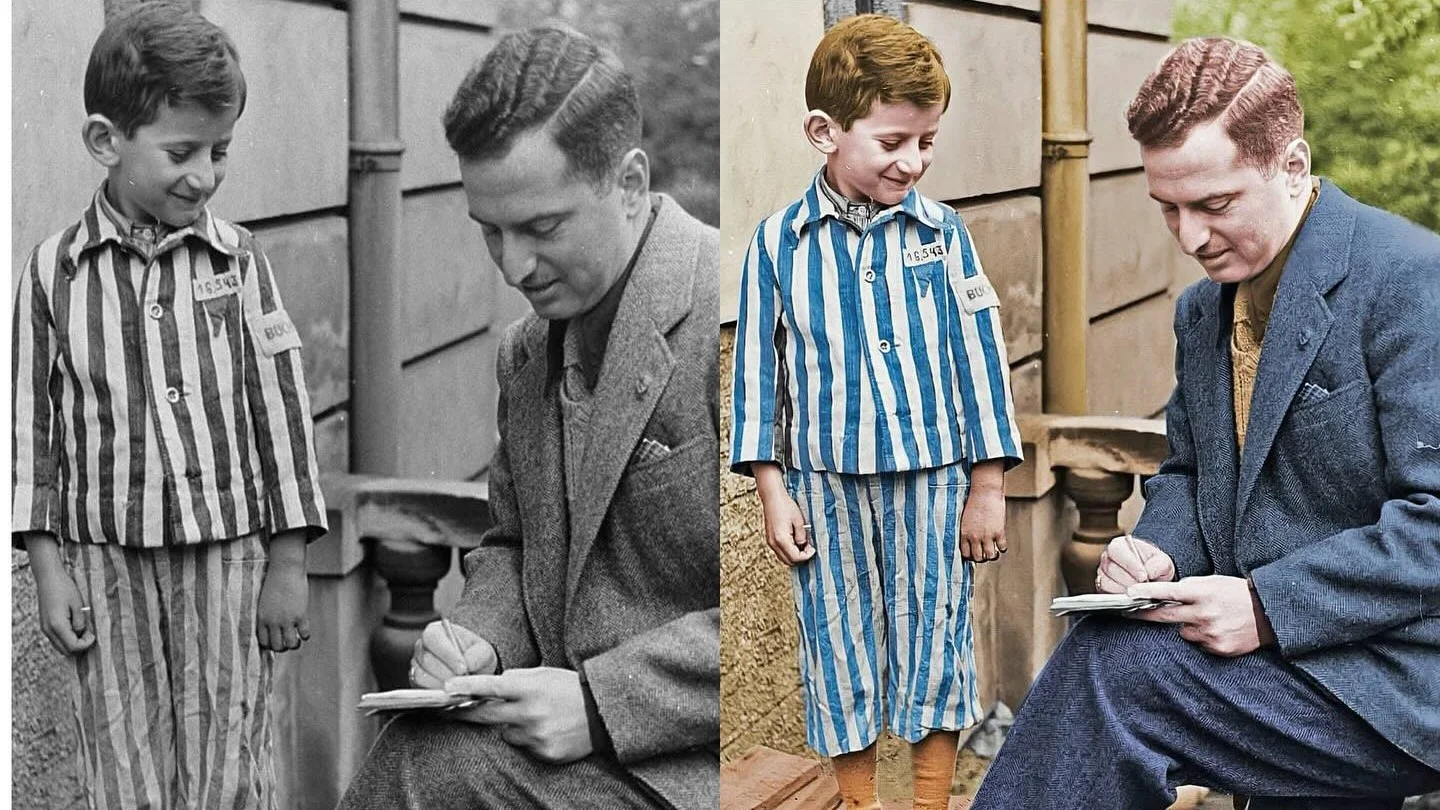
Image
Joseph’s survival was nothing short of miraculous. When Buchenwald was liberated by Allied forces in April 1945, he emerged as one of the youngest survivors of the camp, a living testament to the strength of the human spirit. Just three years later, in 1948, at the age of seven, Joseph was interviewed by an American journalist. Still wearing the tattered prisoner-of-war uniform that dwarfed his small frame, his image captured the world’s attention. The photograph of this fragile yet defiant boy became a powerful symbol of hope, resilience, and the enduring will to survive against all odds.
Joseph’s story resonated far beyond the confines of Buchenwald. His survival challenged the Nazi ideology that sought to dehumanize and destroy him, proving that even in the darkest of times, courage and love could prevail. His father’s daring act and the unexpected leniency of some guards underscored the complexity of human behavior, even in the heart of evil. For those who heard his story, Joseph became an emblem of the millions who suffered, a reminder that each survivor carried the weight of those who did not make it.
The Legacy of a Child Survivor
Joseph Schleifstein’s survival was not just a personal triumph but a profound rebuke to the Nazi regime’s attempt to erase his existence. By living to tell his story, he ensured that the horrors he endured would not be forgotten. His experience highlights the extraordinary lengths to which parents went to protect their children and the rare moments when humanity flickered in the darkest corners of the Holocaust. For history enthusiasts and casual readers alike, Joseph’s story is a gripping narrative that blends heartbreak with hope, making it a compelling share on platforms like Facebook.
Joseph Schleifstein’s journey from a suitcase in Buchenwald to a global symbol of survival is a testament to the unbreakable human spirit. At just four years old, he faced horrors that no child should endure, yet he emerged as one of the youngest survivors of the Holocaust. His story, marked by his father’s desperate love and an unexpected act of mercy, reminds us of the resilience that can defy even the most monstrous regimes. His survival made the Nazis pay—not with violence, but with the enduring legacy of a boy who refused to be erased. Let Joseph’s story inspire us to cherish hope, courage, and the unyielding will to live.


